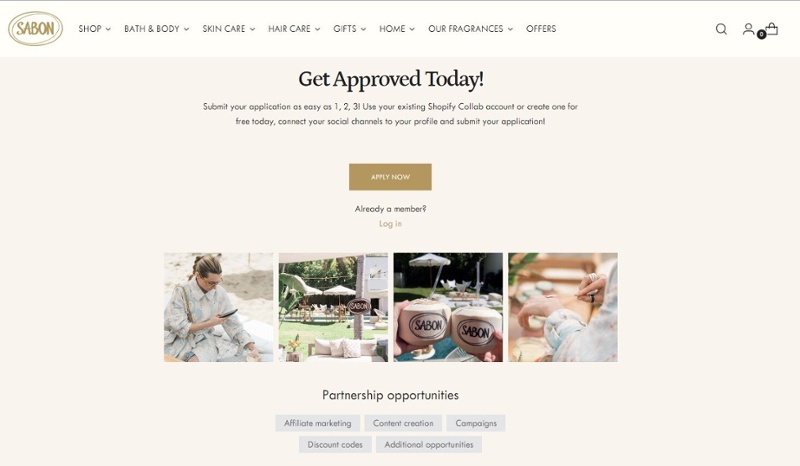
Scaling an existing influencer program into a community is easier said than done.
But more and more brands are doing exactly that.
Based on our internal data, brands are growing their influencer programs by 36% YoY.
As a result, these same brands are moving away from one-off collaborations. Instead, they’re building influencer communities and working with an ever-growing roster of familiar creators.
We get it: the concept of scaling an influencer community is daunting. However, doing so might be more straightforward than you might think. That’s what we’ll cover in this post!
5 Steps to Scale Your Influencer Program
Chances are you’re already overwhelmed with influencer marketing campaigns day-to-day.
And managing an influencer community on top of that might seem over the top.
The reality? By putting in the work upfront, scaling your influencer program can actually save time and reduce your workload long-term once you establish it.
That’s because communities create a snowball effect when it comes to word of mouth and attracting new creators to your brand.
Below we’ll cover actionable strategies to help you scale your influencer program by 100+ creators sooner rather than later.
1. Consolidate Your Creators into a Management Platform
Imagine trying to manage your influencer program with creators scattered across multiple platforms, spreadsheets and contact lists.
It’s chaos, right?
Sure, managing influencer marketing campaigns in spreadsheets works in the short term.
But keeping your influencer community's contact information and performance up-to-date is impossible if you’re doing it DIY.
The good news? Scaling an influencer program is the perfect reason to graduate from Excel and Google Sheets to a proper influencer management platform.
Start by uploading all your current creators to your chosen platform. This will give you a clear inventory of how many creators you have and what they bring to the table.
Think of it like taking stock before you open a new store. You need to know what you have before you can worry about what you need. For example, you might find that your roster of influencers is bigger or smaller than you might have assumed.
Either way, this centralized approach not only simplifies management but also provides a solid foundation to build and scale your influencer community from the ground up.
2. Grow Your Brand’s Inbound Influencer Pipeline
Growing your influencer program requires a steady influx of new creators. No-brainer, right?
The idea here is simple: attract creators to come to you instead of finding them yourself.
Influencer discovery and outreach are notoriously time-consuming. These tasks should be reserved for your most high-stakes collabs. On the flip side, attracting creators like you would inbound leads means that you never have to scramble for new influencers.
Here are some ways to build your influencer program pipeline:
- Offer rewards or freebies to current creators who refer new influencers to your community
- Make sure to consistently promote and engage a branded hashtag for customers and influencers to post user-generated content to
- Frequently post and repost your influencers via social (or even consider running UGC ads featuring them to attract new creators)
One effective strategy that ties back to all of the above is to create a landing page with an influencer application form. Below is an example from Sabon.

Source
This type of landing page makes it easy for potential influencers to apply to join your influencer program. You can promote your application across your entire marketing funnel including your email list and even via paid ads.
Also, don’t miss opportunities for your current creators to promote your brand's influencer marketing efforts!
Consider the power of word-of-mouth and that happy creators can be your best ambassadors. Encourage your current influencers to spread the word about your program via social media. Content creators follow other creators and are always hungry for new brand collab opportunities.
Remember: influencer marketing programs can be fiercely competitive but they don't have to be. When accepting new influencers, you should establish benchmarks and restrictions for follower count and engagement rate to help speed up the vetting and approval process. This might be a range instead of a hard number.
Note that depending on which influencer marketing platform you adopt, you might be able to also source creators directly from there.
3. Do Product Seeding to Kickstart Your Influencer Program
Product seeding is a proven way to attract new creators to your community.
By sending your products to as many creators as possible, you can create the snowball effect we mentioned earlier. More people posting about your products means more word of mouth and more potential influencers to onboard. Win-win!
For the sake of speed, consider running a product seeding campaign that features your past customers who you already have contact information for. You might use a product seeding platform or simply send product samples or freebies to your past customers.
From there, monitor who posts about your products and reach out to them to join your community.
The beauty of product seeding is that it can be done quickly and at scale. This also represents an opportunity for you to be proactive about growing your influencer community instead of simply hoping that people apply and join up.
The caveat is that the success rate of your seeding campaign isn’t guaranteed if you do it DIY. Lost shipments, wrong addresses and mismatched products are all possibilities if you’re not careful.
On the flip side, consider that a product seeding platform like Statusphere can send products to micro-influencers with guaranteed delivery.

Having fewer question marks when it comes to your influencer marketing strategy is always a plus. By ensuring that products get into creators' hands, you can increase the success rate of your seeding efforts without second-guessing. That means more word of mouth and more opportunities for your creator community to grow.
4. Template Your One-to-Many Communication with Creators
Scaling a community program requires constant communication.
From sending out briefs to approving and rejecting influencer requests, the sheer volume of day-to-day communication can be overwhelming.
This is where templating can save you significant time and effort.
Here are some examples of what you can template, plus actual influencer marketing templates and resources you can use:
While it's essential to personalize your initial outreach, templates can streamline ongoing communication. Think of it as setting the stage for efficiency. You still provide a personal touch but within a structured framework that saves you time.
That said, you shouldn’t template everything.
One-on-one support and attention to detail matters for building relationships with influencers. But by templating more general messages, you can give your creators who need support the attention they deserve. This results in more seamless and positive influencer partnerships.
5. Automate the Right Influencer Management Tasks
Automation is at the core of building up your influencer program, especially when partnering with 100s or 1000s of creators.
With the right tools, you can automate tedious tasks holding your growth back while opening up more of your schedule to focus on building meaningful influencer relationships and getting UGC.
How much you can automate once again depends on your influencer marketing platform, though. Below is a snapshot of what can be automated based on our own platform's features.
Creation Segmentation
You can use automation to target and segment influencers based on various factors such as product preferences, preferred brands, birthdays and key demographic data. This allows you to tailor your approach and create more personalized influencer campaigns without manual note-taking.
This is especially important if you’re working with different types of influencers or promoting a wide variety of products at once. The more effectively and efficiently you can segment influencers, the easier it is to engage multiple target audiences without spreading yourself thin.
Influencer Product Fulfillment
Shipping products to creators manually is a massive time-sink and can slow down the progress of your influencer strategy. On the flip side, automation can ensure that products are sent out promptly and efficiently. For example, Statusphere’s platform automates the process of tracking orders, sending shipments and keeping influencers’ addresses up to date.
Creator Communication
As noted earlier, you can shift from exclusively one-on-one communication to a one-to-many approach with automation. Automated emails, DMs and campaign updates can keep your creators informed and engaged without overwhelming them.
Gathering Influencers’ Posts
Automating influencer content approvals and content usage rights are massive time-savers. With the right platform, you can gather your rights-ready content without having to download it manually.
Creator Compensation
Consider how you can automate the influencer compensation process to avoid a ton of headaches. More importantly, you can keep your influencer community happy and engaged by compensating them on time.
Having all of the above on autopilot means you can spend more time building recruiting new creators and actually getting content.
How to Grow Your Brand’s Influencer Program ASAP
As more brands scale influencer campaigns, scaling programs into communities is a natural next step.
By fostering an influencer community, you can build long-term relationships with creators who know and understand your brand. This means you can earn better content and reduce back-and-forth with a community that just “gets it.”
Of course, influencer programs aren’t built by accident. Influencer managers must take a proactive approach and make sure that they have the right marketing stack.
That’s where Statusphere’s software can help. Our platform serves as an all-in-one influencer management tool for brands to build and manage their creator programs at scale without all the manual legwork. We eliminate time-consuming communication and automate the process of getting products into vetted creators’ hands ASAP.
Want to see how our platform works? Get in touch with one of our experts to see how Statusphere can help your brand build authentic connections with influencers at scale.
